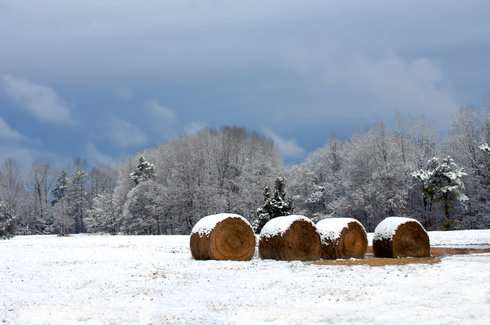A new report highlights the positive growth of southwestern Ontario’s land values
By Jennifer Jackson
Farmland sale values are increasing moderately – a positive fact for some southwestern Ontario farmers, according to a recent study.
From 2015 to 2016, land values reflected in sales increased 5.88 per cent, according to Southwestern Ontario Land Values 2016 Edition, created by Ryan Parker, partner at Valco Consultants Inc. The study examined farm sales in 12 southwestern Ontario counties.
This modest increase in land values is especially notable considering the decline in commodity prices late in 2013, says Parker.
“After you get a drop of commodity (prices) like we did, (the growth in land value is) a positive thing for the industry that producers have been able to withstand certain market forces and have still be able to expand and grow their businesses,” he says. This growth is also “a testament to the strength of our banking system … we have banks that are really willing to work with farmers to give out capital so they can grow, expand their operations and be more efficient.”

Low interest rates was the largest factor that contributed to 2016’s growth in land sale values, according to Parker.
“Interest rates have been historically low – the outlook doesn’t look like we will see any big jumps in (these) rates,” he says. “This is a positive outlook for farmers that want to borrow money and buy farms.”
Any change in interest rate could affect land values. With any increases in rates, “it would be concerning to see what could happen to land values,” says Parker.
Commodity prices are another significant factor that can impact Ontario land sales. These prices were a large contributor to the steep land value incline in southwestern Ontario between 2010 and 2013, Parker says. Commodity prices began to decline late in 2013, helping to curb the land sale value increases seen in the years after.
“When you grow as fast as (southwestern Ontario) did in land values, you can’t (expect to) continue to (grow like that) forever – we have hit that plateau,” he says. “Even if we had a major spike in commodity prices, I would imagine land values would follow suit – but not as aggressive as they did three to five years ago.”
Overall, Parker expects 2017’s land sale values will grow similarly to 2016’s values.
“As long as we don’t see any large changes in interest rates, (I would) expect that (southwestern Ontario) will be within 5 per cent to zero change year to year, and that is not a bad place to be,” says Parker. “We have some expensive ground here in Ontario and being around level (in terms of land value growth) is not a bad thing.”
Notable facts:
- Land sale value average change from 2010 to 2016: 111.55%
- Southwestern Ontario average value per acre for 2016: $12,236
- Oxford and Waterloo county had some of the highest average land values for 2016, between $18,000 and $20,000 per acre
- Essex, Bruce, and Grey county had average land values between $7,000 and $9,000 per acre for 2016